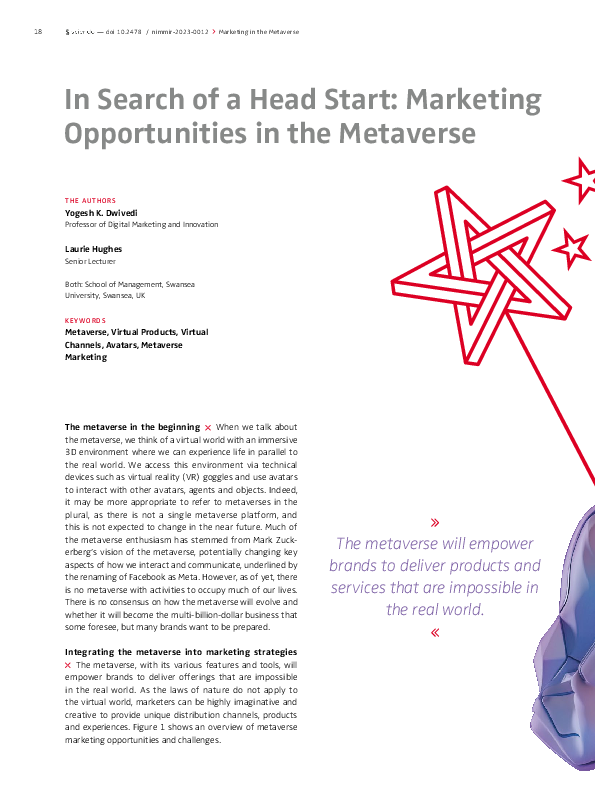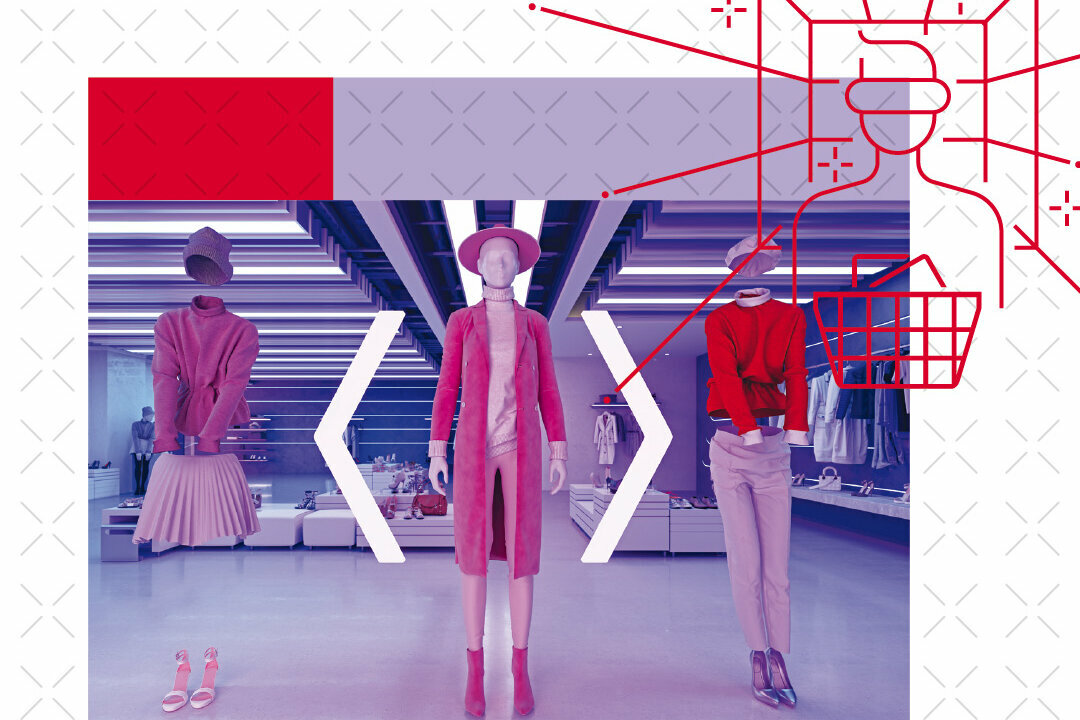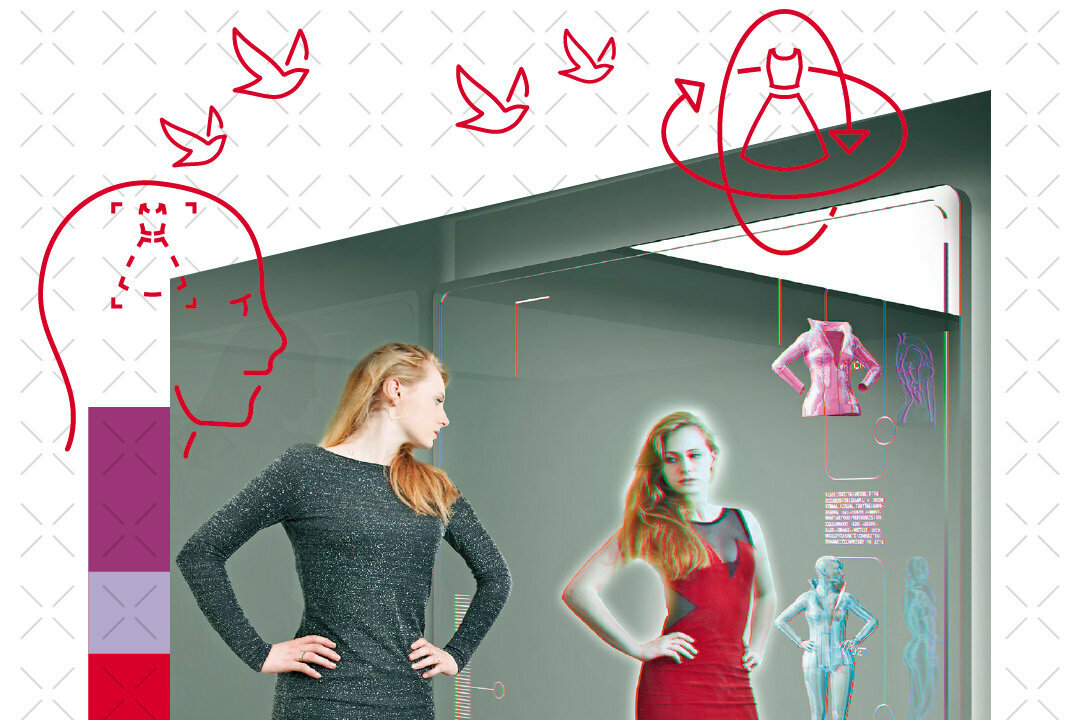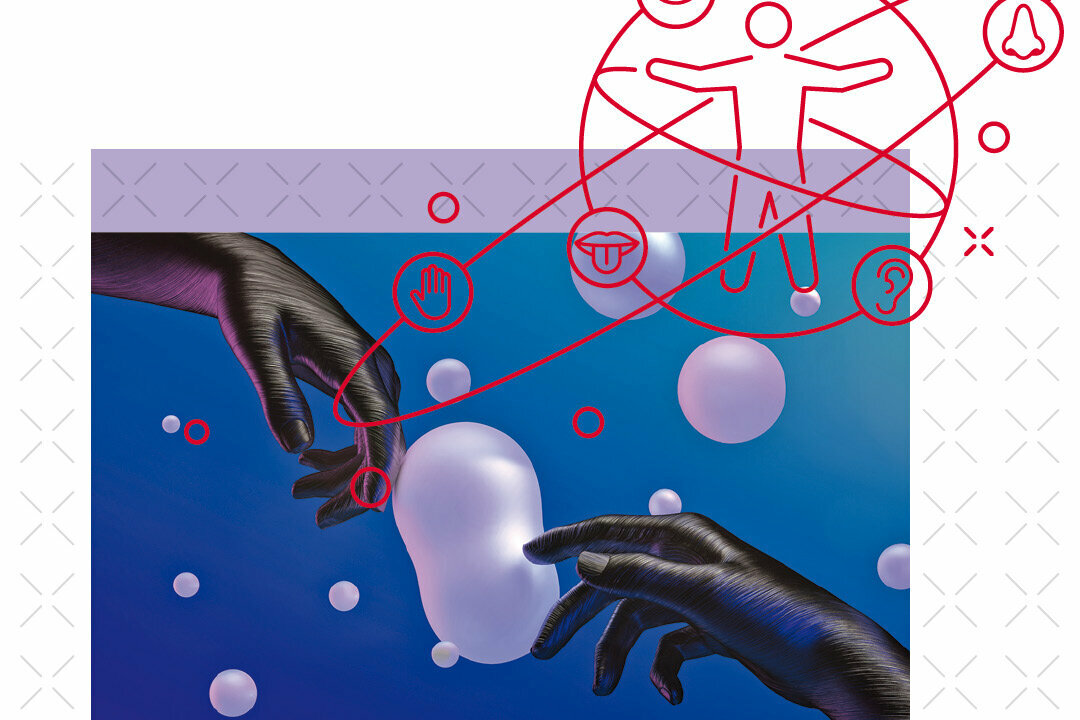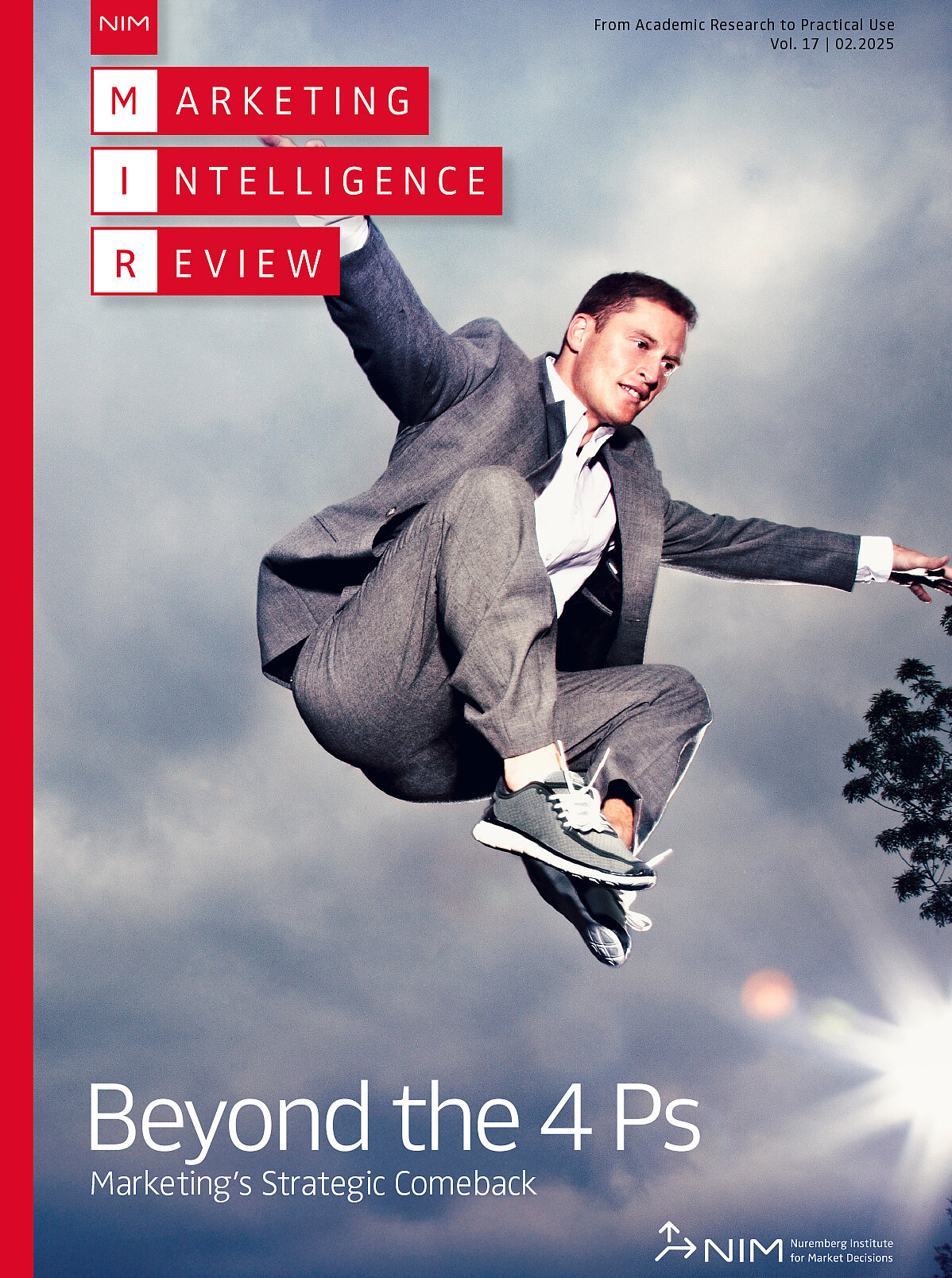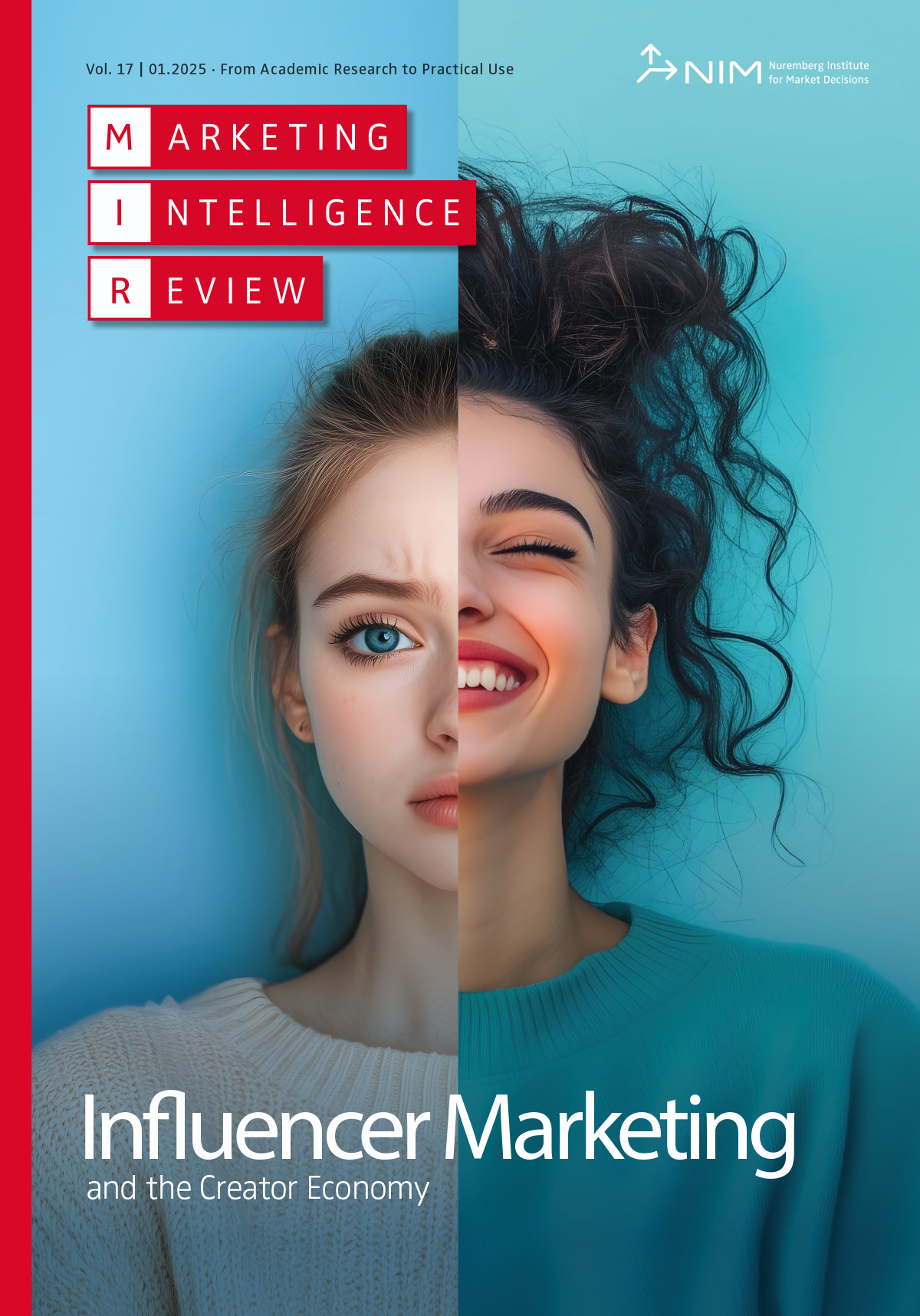In Search of a Head Start: Marketing Opportunities in the Metaverse
The metaverse in the beginning
When we talk about the metaverse, we think of a virtual world with an immersive 3D environment where we can experience life in parallel to the real world. We access this environment via technical devices such as virtual reality (VR) goggles and use avatars to interact with other avatars, agents and objects. Indeed, it may be more appropriate to refer to metaverses in the plural, as there is not a single metaverse platform, and this is not expected to change in the near future. Much of the metaverse enthusiasm has stemmed from Mark Zuckerberg’s vision of the metaverse, potentially changing key aspects of how we interact and communicate, underlined by the renaming of Facebook as Meta. However, as of yet, there is no metaverse with activities to occupy much of our lives. There is no consensus on how the metaverse will evolve and whether it will become the multi-billion-dollar business that some foresee, but many brands want to be prepared.
Integrating the metaverse into marketing strategies
The metaverse, with its various features and tools, will empower brands to deliver offerings that are impossible in the real world. As the laws of nature do not apply to the virtual world, marketers can be highly imaginative and creative to provide unique distribution channels, products and experiences. Figure 1 shows an overview of metaverse marketing opportunities and challenges.
The metaverse will empower brands to deliver products and services that are impossible in the real world.
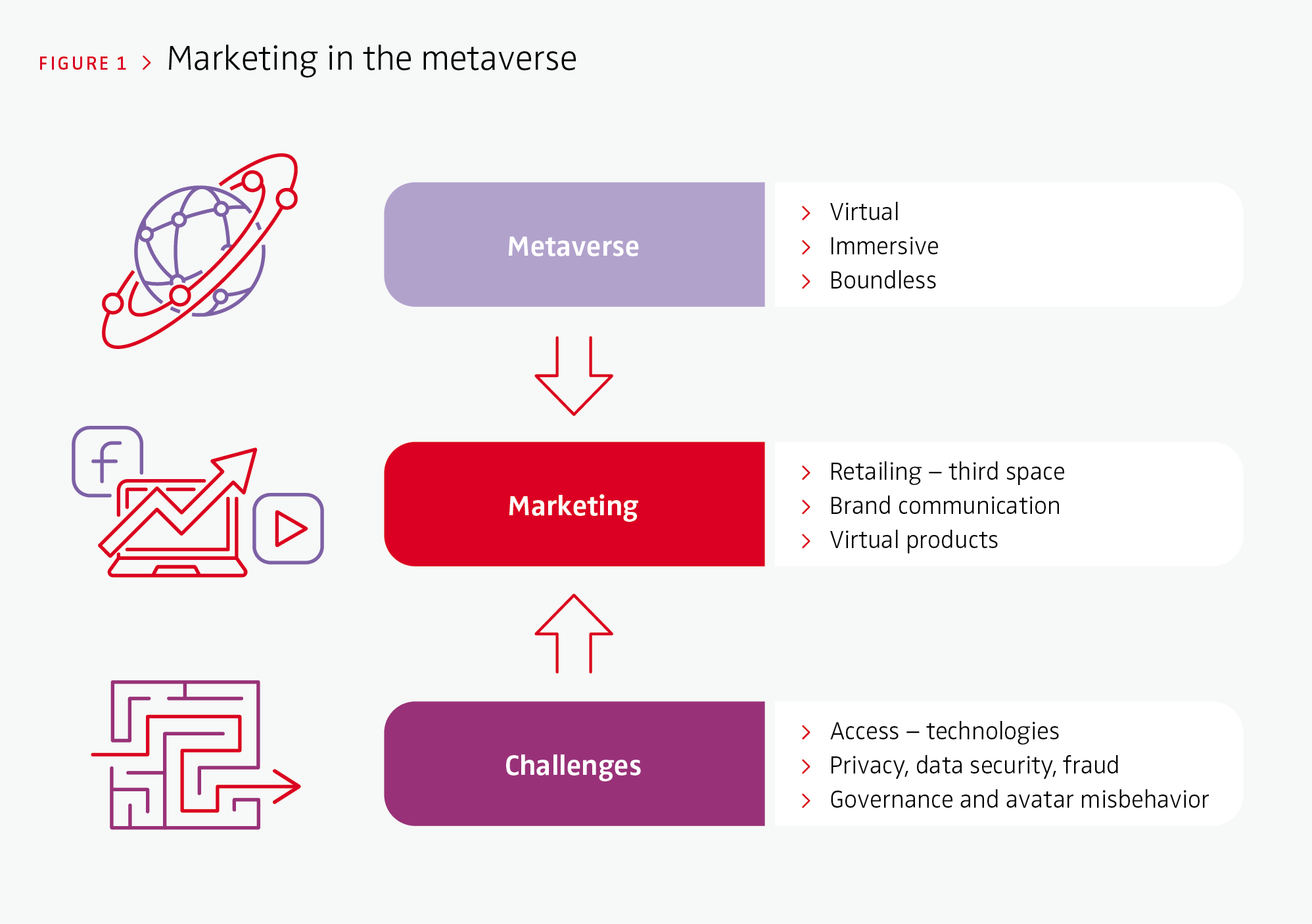
> Metaverse as a third space for retailing
It is expected that, at first, metaverse-based retail spaces would co-exist with other online and offline channels, such as web-based electronic shops or brick-and-mortar ones, adding a third space. The metaverse will provide new opportunities to reach existing and potential customers and offer them an immersive experience. Therefore, marketers should develop an overarching and comprehensive strategy for the three different spaces. The virtual world enables brand experiences beyond physical shopping, and brands can create new meaningful and inclusive interactions. The high level of immersion and interactivity can also bring benefits to physical stores. For example, small brick-andmortar retailers can overcome their limited store size and create additional digital store space in the metaverse to effectively showcase their whole range of products. Users can enter this store for a more personalized experience and try out the products right from home. IKEA, for example, has launched augmented reality (AR) concepts that allow shoppers to see how a lamp will look in their room. Dyson has also begun to develop its own virtual reality by allowing customers to test their products in an immersive online environment.
> Metaverse brand communication
Advertising in the metaverse must be created and planned to be interactive and immersive to maximize its potential. Though some users might choose to skip the interaction, others might want to interact with the messages and products. Metaverse advertising will need to be prepared for that moment because the virtual environment induces the perception of presence. When users feel as if they are present in the virtual world, they can feel more connected to the product and process the message more effectively. Beyond advertising, brand communities in the metaverse are another promising area for marketers. Building brand loyalty is crucial for brands’ long-term success, and the metaverse will allow brand community members to connect more effectively than on Internet blogs or chatrooms and offers excellent communication tools. Furthermore, events and competitions in the metaverse can be organized like real life, providing more options for brands to engage with their customers.
> Virtual products and digital twins to unlock new revenue streams
The metaverse presents an opportunity for companies to generate additional income by selling products, creating a parallel economy where virtual branding and sales complement physical product sales. Brands can launch NFT (non-fungible token) collections, such as Adidas virtual wearables and Lamborghini artworks, to monetize themselves in the metaverse and open up another revenue stream. The metaverse also provides a platform to sell digital twins – digital replicas of real-world objects that can be used by consumers’ avatars. For example, Forever 21 has recently teamed up with the gaming platform Roblox to offer users the ability to build their own virtual Forever 21 shops. There, they can sell and buy virtual versions of products that are also available as physical equivalents on the website. Some luxury fashion houses are also exploring the metaverse (see Box 1).
Challenges of metaverse engagement
Despite the excitement and new opportunities brought by the metaverse, it also brings challenges and new risks to individuals and society. To build a successful metaverse marketing strategy, marketers need to be aware of these risks and consider them in their decision-making.
> Technical issues
Brands and platform companies must address many infrastructural and technical issues as the metaverse develops. The interface should be easy to use and consider users’ social and cultural factors while creating a multicultural metaverse. Improved hardware and software are essential enablers of the metaverse. The lack of affordable and accessible VR or AR headsets and other accessories may affect user participation and experience and hinder brands’ ambitions in the metaverse. Moreover, the technology is far from perfect in terms of the quality of experience and requires significant technological advancements.
Marketers should develop an overarching and comprehensive retailing strategy for online, offline and virtual spaces.
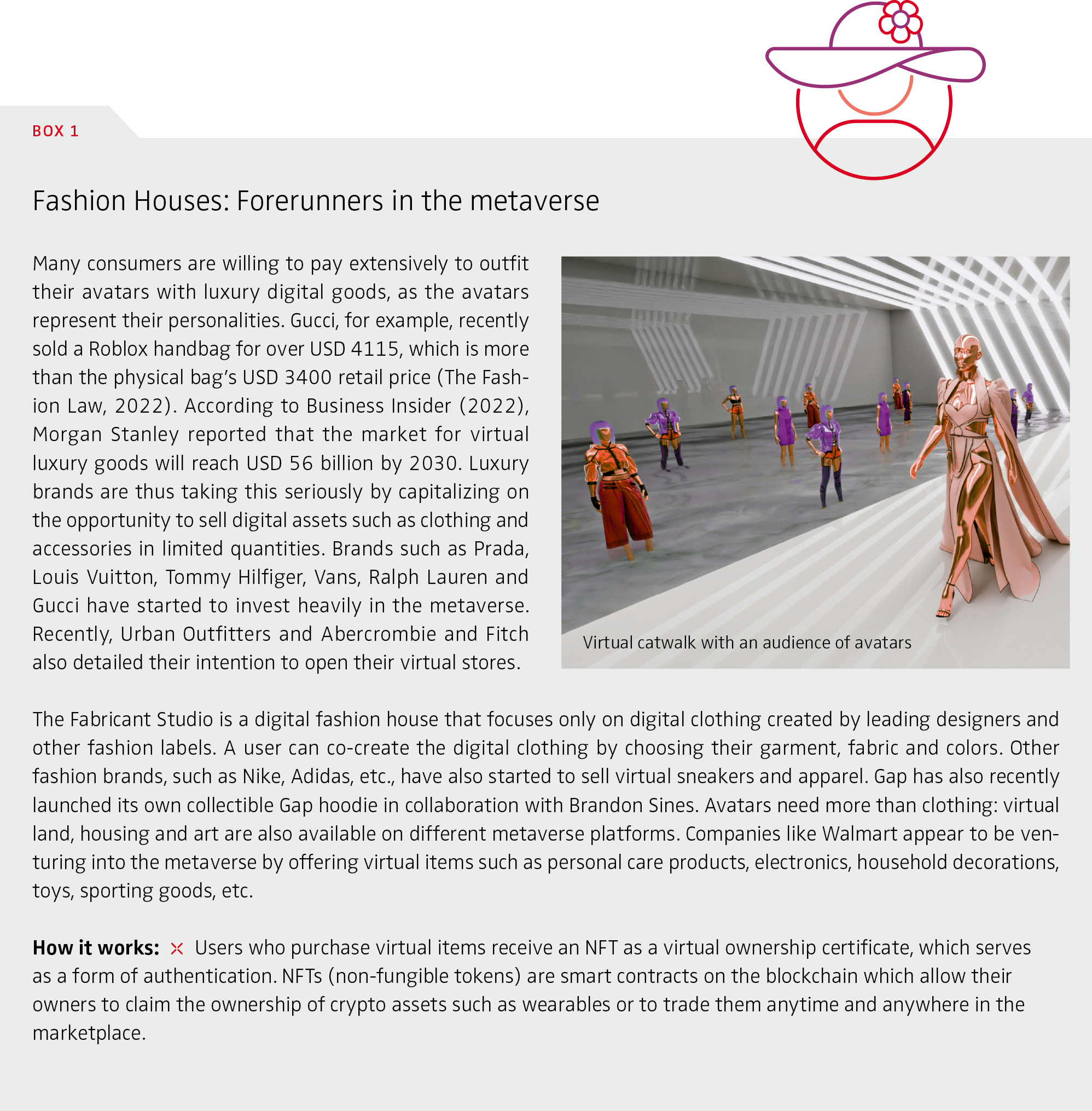
> Privacy issues and data security
Information privacy remains a big challenge as large amounts of information will be collected from participating individuals and their interactions in the metaverse. Apart from the users’ passwords, email addresses, etc., metaverse platforms can also track the behavior of users via biometric data and interactions with users’ avatars within the metaverse. Retailers can monitor users’ physiological responses, vocal inflections and facial movements in real time through multiple channels, such as microphones and wearable devices, providing organizations with a wealth of information for targeted advertising and profiling. The information can be leveraged to create individualized products and services based on the user’s expectations. Given this valuable information, users could be prone to hackers who may steal the new rich sources of personal data. There are also issues related to identity theft in the metaverse, where bots or imposters can easily mimic a user’s style, data and personality and thus cause mistrust among potential consumers. Questions remain as to how a consumer can verify if the avatars are trustworthy and legit. The challenge of building trust among consumers lies in the possibility of developing biometric identification in the near future. Data security and potential fraud, likewise, are major challenges.
> Avatar misbehavior
There are a growing number of reported cases of harassment, sexual abuse, bullying, hate speech, racism, unchecked gambling and various forms of deviant behaviors within metaverse-like platforms. In December 2021, a woman in the UK wrote in a blog post that she was verbally and sexually harassed by three to four male avatars within 60 seconds of joining the virtual game Horizon Worlds developed by Meta. There are several reasons why deviant behaviors are common in the metaverse. Online disinhibition, a psychological state in which individuals feel more relaxed and willing to engage in certain behaviors in the online environment, appears to be a major factor leading to the occurrence of deviant behaviors in the metaverse. Brands should take governance seriously and be vigilant, as such misbehavior might damage the reputation and image they have built in the real world.
Virtual and real coexistence will be challenging
Branding in the metaverse must be aligned with brand philosophy and brands need to understand whether users are equipped with the necessary resources, skills, capabilities, technology and monetary means. This may vary across sociocultural contexts and age groups. Managers must also solve technical and infrastructural issues, ensure ethical conduct is practiced and follow regulatory policies. Professor Giampaolo Viglia, Editor in Chief of the Journal of Psychology & Marketing, further summarizes the current state of metaverse research and emphasizes the need for more research: “The metaverse is still in its infancy but there are many future applications that would offer a quantum leap benefit to customers. Importantly, the metaverse comes also with a dark side, as it might increase consumer vulnerability. Therefore, we need high-quality research on the topic to understand how to maximize the benefits of the metaverse to minimize the risks.” Scalability, interoperability and the overall metaverse business environment are still vague, but anyone who wants to be part of the game should familiarize themselves with the new world. How do organizations prepare for the metaverse? Take a look at the popular gaming and social interaction platforms, such as Roblox, Decentraland, Sandbox and Second Life, and try to visualize how your brands could be part of this new environment to interact with your consumers.
FURTHER READING
Dwivedi, Y. K., Hughes, L., Wang, Y., Alalwan, A. A., Ahn, S. J., Balakrishnan, J., ... & Wirtz, J. (2022). Metaverse marketing: How the metaverse will shape the future of consumer research and practice. Psychology & Marketing. 1–27. doi.org/10.1002/mar.21767
Dwivedi, Y. K., Hughes, L., Baabdullah, A. M., RibeiroNavarrete, S., Giannakis, M., Al-Debei, M. M., ... & Wamba, S. F. (2022). Metaverse beyond the hype: Multidisciplinary perspectives on emerging challenges, opportunities, and agenda for research, practice and policy. International Journal of Information Management, 66, 102542. doi.org/10.1016/j.ijinfomgt.2022.102542
